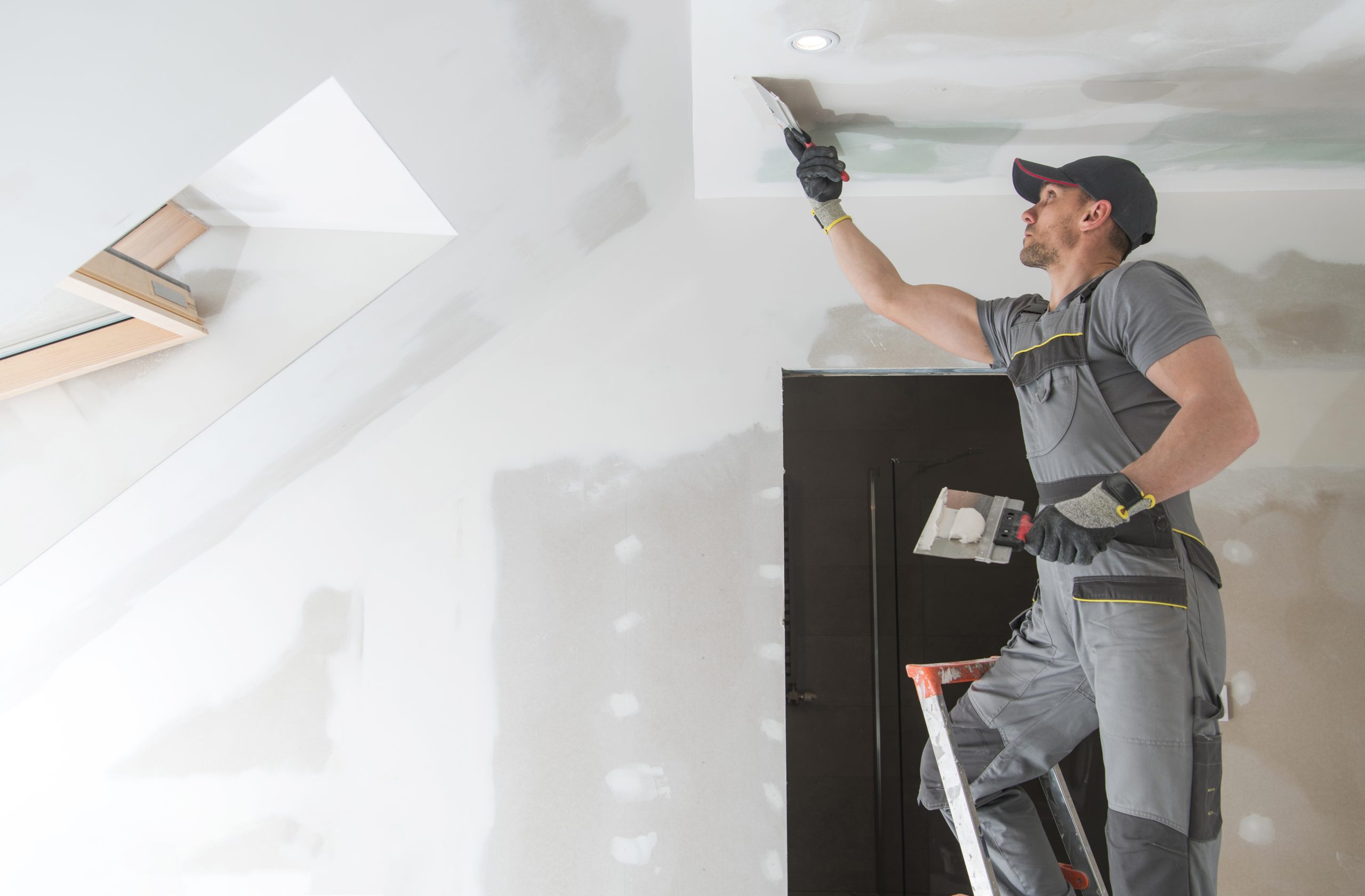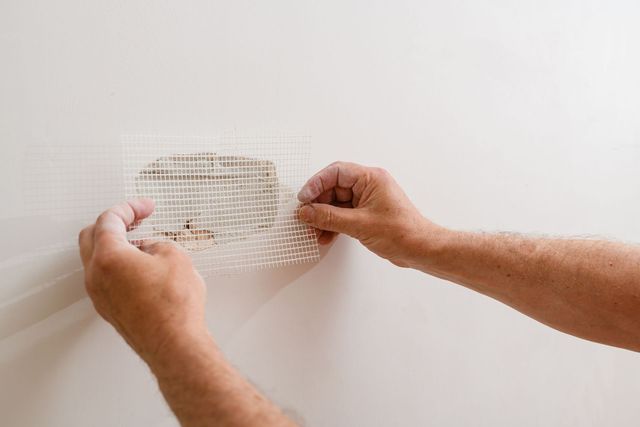Essential Tips for Effective Drywall Repair and Installation Methods
Efficient drywall repair service and installation needs a cautious strategy. Comprehending the kinds of drywall and having the right tools is crucial. Exact measurements and appropriate techniques can considerably influence the result. Several neglect important steps like taping and sanding, which can make or damage the final appearance. As tasks advance, usual obstacles might develop that require attention. Discovering these ideas can result in a much more refined and successful surface.
Understanding Various Sorts Of Drywall
Comprehending the different sorts of drywall is crucial for any kind of effective repair or installation project. Drywall, frequently known as plaster board, can be found in several varieties tailored for certain applications. Criterion drywall is the most commonly used type, ideal for basic indoor wall surfaces and ceilings. Moisture-resistant drywall, typically green in color, is designed for locations vulnerable to moisture, such as kitchens and shower rooms. Fire-resistant drywall, typically colored pink or purple, is engineered to stand up to greater temperature levels and is commonly used in garages or near furnaces. Additionally, soundproof drywall helps reduce sound transmission, making it appropriate for multi-family homes or taping studios. Specialty drywall, like cement board, is used in damp locations like showers or tub surrounds. Understanding these types assists in choosing the right product for every job, guaranteeing toughness and effectiveness in repair work or new setups.
Necessary Devices for Drywall Repair Work and Setup
Having the right devices is important for reliable drywall fixing and installation. A high quality energy knife is important for cutting drywall sheets specifically. A drywall T-square helps assure straight edges, while a taping blade is essential for using joint compound smoothly over joints. Furthermore, a drywall saw permits for removing harmed areas or fitting drywall around fixtures.
For hanging drywall, a power drill with drywall screws is important, as it allows fast and safe and secure installation. A degree is additionally vital to confirm that the drywall is straight and correctly aligned. Once it has actually dried out, a fining sand block or post sander is necessary for smoothing out joint substance. A determining tape is critical for accurate dimensions, stopping waste and guaranteeing a proper fit. Equipped with these devices, individuals can take on drywall jobs successfully, resulting in professional-looking results.
Step-by-Step Overview to Repairing Holes and Cracks
When addressing openings and fractures in drywall, having the right devices and products is essential for a successful repair service. This overview details the needed things and offers a clear, step-by-step process to properly recover the surface area. Comprehending these aspects will certainly aid ensure a seamless surface and long-lasting results.
Tools and Products Needed
A fully equipped toolkit is essential for efficient drywall repair service and setup. Key tools include an utility knife for reducing drywall, a tape procedure to ensure exact sizing, and a drywall saw for bigger openings. A putty blade is crucial for applying joint substance smoothly, while a fining sand block or post sander aids attain a seamless surface. For patching, a roll of fiberglass fit together tape or paper tape is required to reinforce joints. Additionally, a drill and screws are required for securing brand-new drywall items. Essential materials include joint compound, guide, and paint to complete the repair work. Having these tools and products on hand guarantees a smoother, extra effective fixing procedure, generating professional-looking outcomes.
Repair Process Steps
Fixing holes and fractures in drywall calls for a systematic method to guarantee a smooth coating. The area surrounding the damages needs to be cleaned extensively to eliminate dust and debris. Next, for little cracks, a putty knife is utilized to apply a joint substance evenly over the location. For bigger holes, a spot is necessary; the harmed section is cut out, and a new piece of drywall is suited area, safeguarded with screws. Once the spot remains in setting, joint compound is used to blend the edges. After drying, fining sand the location smooth is vital. Lastly, the repaired surface should be topped and painted to match the surrounding wall surface, ensuring a low-profile fixing.
Methods for Installing Drywall Panels
Mounting drywall panels requires cautious preparation and accurate implementation to assure a smooth and professional surface. First, it is important to gauge the wall room accurately and cut the panels to fit, ensuring that they line up with the studs. Placing the panels horizontally is typically suggested, as this can boost the structural integrity and minimize the variety of seams.
Making use of drywall screws, installers should secure the panels every 16 inches along the studs, making certain a firm hold. It is crucial to prevent overdriving the screws, which can harm the paper surface. For corners and sides, utilizing an utility blade enables clean cuts and a snug fit.

Ending Up Touches: Insulation, Mudding, and Sanding
Once the drywall panels are safely in location, the following crucial action involves the finishing touches of taping, mudding, and sanding. Insulation is essential for creating a seamless shift between panels and hiding joints. A quality drywall tape, either paper or fiberglass harmonize, need to be applied over the joints, guaranteeing it adheres properly to the mud that will certainly be applied next.
Mudding, or using joint compound, adheres to the taping procedure. This compound loads spaces and smooths out the surface area. A first coat ought to be used generously, feathering the edges to blend with the drywall. After the initial layer dries, succeeding layers may be needed for a flawless finish.
Fining sand is essential to accomplish a smooth surface area. A fine-grit sandpaper must be used to carefully ravel any flaws. Treatment ought to be taken to prevent over-sanding, which can damage the drywall - Drywall Repair Ogden UT. Appropriately executed, these finishing touches produce a specialist appearance prepared for painting
Tips for Preserving Your Drywall After Installment
Maintaining drywall after setup is vital to maintaining its look and architectural integrity. Regular cleansing is essential; dirt and dirt can accumulate, so gentle wiping with a wet fabric is recommended. Property owners need to likewise check for any kind of indicators of wetness or mold and mildew, specifically in high-humidity locations like shower rooms and kitchen areas. If any kind of damages happens, it is very important to address it promptly to stop further concerns.
Making use of furniture pads can help stop scratches or dents from heavy things. In addition, repainting the drywall with a high-quality, cleanable paint offers an extra try this web-site layer of protection and makes future cleansing simpler. Stay clear of making use of abrasive cleansers or tools, as these can damage the surface area. Finally, keeping a steady indoor climate with suitable humidity levels will certainly assist stop splitting or warping with time. By complying with these pointers, one can guarantee that drywall continues to be in excellent condition for several years to find.
Frequently Asked Inquiries
The Length Of Time Does Drywall Take to Completely Dry After Installation?

Can I Set Up Drywall Over Existing Drywall?
Yes, drywall can be installed over existing drywall, yet it is necessary to ensure the underlying surface area is safe and secure and adequately prepared. This technique can boost insulation and lower setup time, though it may add weight.
What Is the Finest Means to Soundproof Drywall?
The finest means to soundproof drywall involves utilizing specialized soundproofing products, such as resistant channels, acoustic caulk, and sound-dampening drywall. These strategies properly reduce sound transmission between spaces, enhancing total acoustic performance in living areas.
Just how Do I Pick the Right Drywall Thickness?
To select the right drywall density, consider the application and location. Requirement property wall surfaces commonly make use of 1/2 inch, while ceilings or specialized areas might require 5/8 inch for extra toughness and soundproofing capabilities.
Are There Eco-Friendly Drywall Options Available?
Yes, eco-friendly drywall choices are readily available. These consist of items made from recycled products, gypsum boards with low unpredictable organic compounds (VOCs), and those utilizing lasting production procedures, supplying environmentally-conscious choices for building and construction and renovation projects.
Having the right devices is necessary for efficient drywall repair work and installation. For hanging drywall, a power drill with drywall screws is important, as it allows fast and safe installment. Trick tools consist of an energy pop over to this web-site blade for reducing drywall, a tape action to guarantee exact sizing, and a drywall saw for larger openings. Yes, drywall can be mounted over existing drywall, yet it is vital to ensure the underlying surface area is safe and secure and effectively prepared. The ideal way to soundproof drywall involves using specialized soundproofing materials, such as resistant channels, acoustic caulk, and sound-dampening drywall.